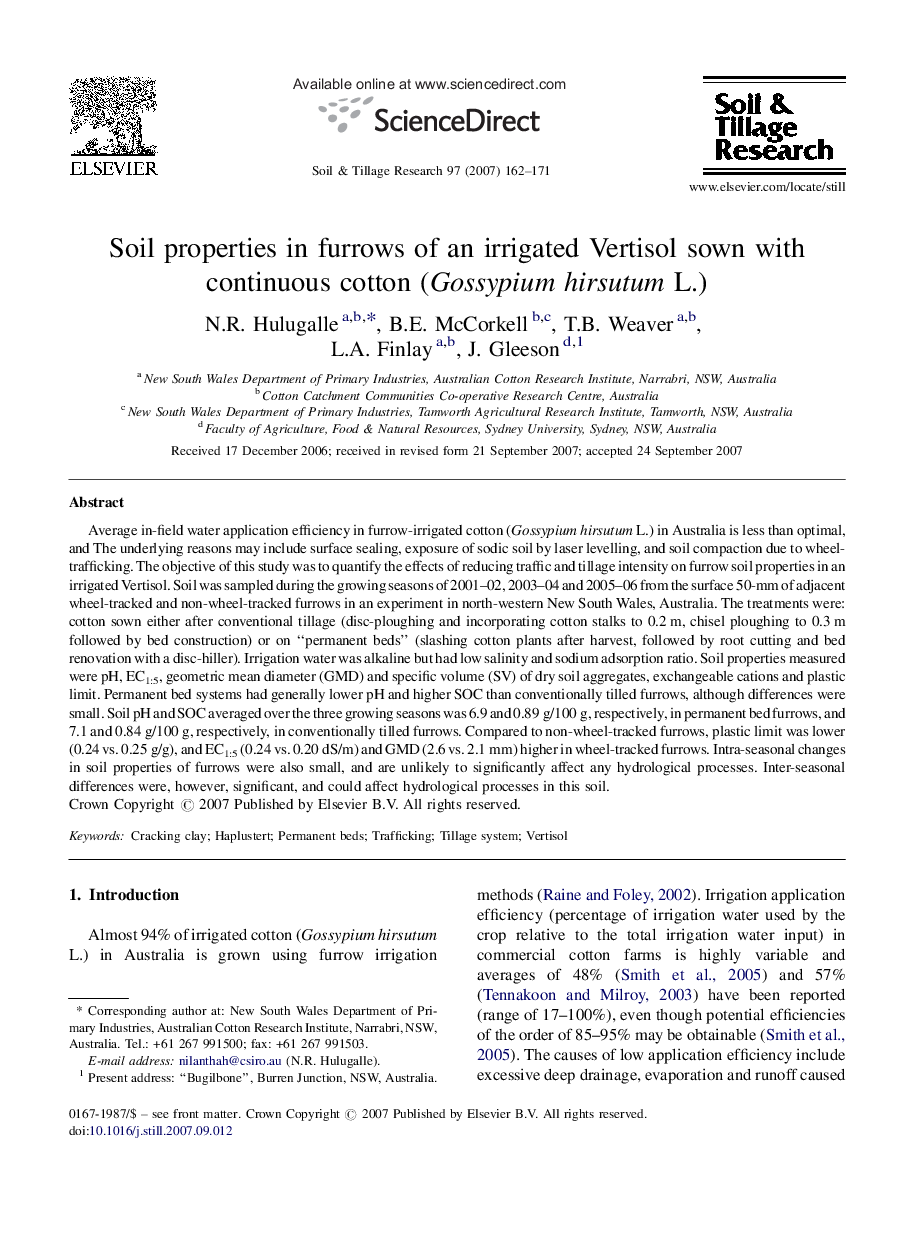| کد مقاله | کد نشریه | سال انتشار | مقاله انگلیسی | نسخه تمام متن |
|---|---|---|---|---|
| 306578 | 513103 | 2007 | 10 صفحه PDF | دانلود رایگان |

Average in-field water application efficiency in furrow-irrigated cotton (Gossypium hirsutum L.) in Australia is less than optimal, and The underlying reasons may include surface sealing, exposure of sodic soil by laser levelling, and soil compaction due to wheel-trafficking. The objective of this study was to quantify the effects of reducing traffic and tillage intensity on furrow soil properties in an irrigated Vertisol. Soil was sampled during the growing seasons of 2001–02, 2003–04 and 2005–06 from the surface 50-mm of adjacent wheel-tracked and non-wheel-tracked furrows in an experiment in north-western New South Wales, Australia. The treatments were: cotton sown either after conventional tillage (disc-ploughing and incorporating cotton stalks to 0.2 m, chisel ploughing to 0.3 m followed by bed construction) or on “permanent beds” (slashing cotton plants after harvest, followed by root cutting and bed renovation with a disc-hiller). Irrigation water was alkaline but had low salinity and sodium adsorption ratio. Soil properties measured were pH, EC1:5, geometric mean diameter (GMD) and specific volume (SV) of dry soil aggregates, exchangeable cations and plastic limit. Permanent bed systems had generally lower pH and higher SOC than conventionally tilled furrows, although differences were small. Soil pH and SOC averaged over the three growing seasons was 6.9 and 0.89 g/100 g, respectively, in permanent bed furrows, and 7.1 and 0.84 g/100 g, respectively, in conventionally tilled furrows. Compared to non-wheel-tracked furrows, plastic limit was lower (0.24 vs. 0.25 g/g), and EC1:5 (0.24 vs. 0.20 dS/m) and GMD (2.6 vs. 2.1 mm) higher in wheel-tracked furrows. Intra-seasonal changes in soil properties of furrows were also small, and are unlikely to significantly affect any hydrological processes. Inter-seasonal differences were, however, significant, and could affect hydrological processes in this soil.
Journal: Soil and Tillage Research - Volume 97, Issue 2, December 2007, Pages 162–171